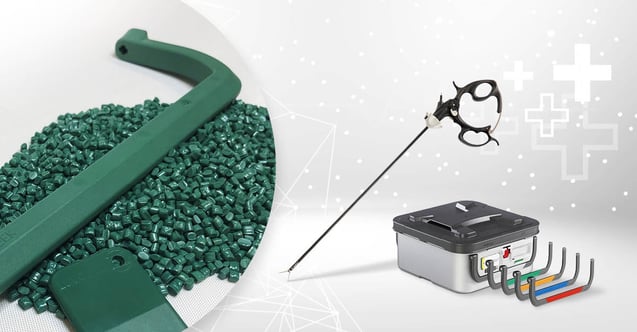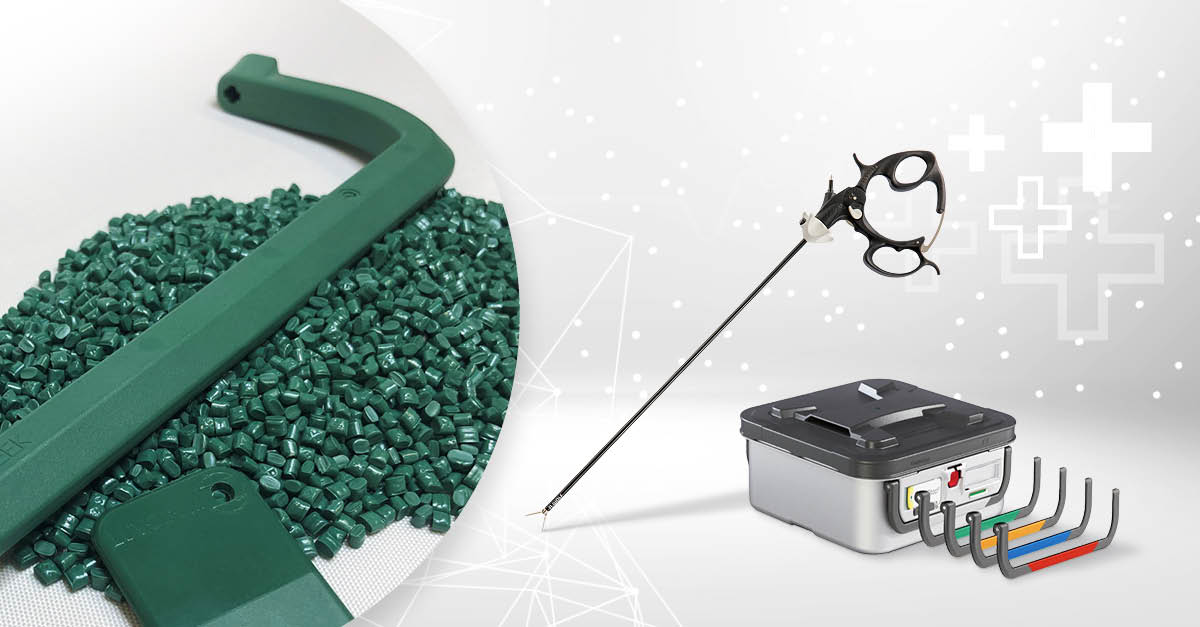High-performance plastics in medical technology: How compounders make life easier for patients, doctors and product developers.

Helping people get healthy or even survive is a multi-faceted, multi-layered team effort. In the field of sophisticated medical technology, this comprehensive spectrum also includes all the people who provide the appropriate high-performance plastics for the development of precisely this technology: the plastics compounders who ensure the optimum composition/performance of the required materials.
Even if the well-being of the patient is naturally at the center of everything we do, the primary goal of the compounder is to make the work of the product developer, processor or designer as efficient and successful as possible.
Just as with any physician from any conceivable specialty, three basic competencies play a decisive role:
- To the appropriate "instruments",
- extensive, in-depth specialist knowledge,
- on the fine art of attentive listening and
- on many years or decades of experience.
Only in this way can challenges and any problems be fully understood and developments or possible solutions be addressed and implemented in a promising manner. Regardless of whether these are located very close to the patient (such as a retractor or an endoscope handle) or further away (such as a sterilization container).
Whether retractor, endoscope handle or sterilization container - high-performance plastics basically follow every development step.
A good - or, in the truest sense of the word, outstanding - compounder combines all this in one person. On the one hand, he knows about the performance of "his" amorphous/semi-crystalline high-performance plastics and, on the other hand, he knows both the requirements of the users (for example, with regard to coloring, mechanical stress, sterilizability, material resistance or even haptics) and those of the processors (for example, with regard to 3D printing, mechanical strength/stiffness, color stability, structural mechanics, FDA approval, cytotoxicity testing or even medical technology regulations).
Above all, however, he knows from his experience that even the most advanced material development alone does not produce an innovative medical technology product.
Even the most innovative material alone does not make an innovative product. It takes a lot more than that.
Because regardless of whether PEEK, PPSU, PPA or PA 66 is modified with carbon or glass fibers and additives, it is only in the further course of development/production that it becomes clear whether the materials behave under the influence in the way that everyone involved hopes or expects.
This is when the hour of the really good compounder strikes; this is when it becomes clear whether the supplier is just a "Polymers & Co. " salesman or a provider of comprehensive systemic solutions. One who can also think and act in 10- or 20-year time frames and who supports product developers along the entire path to the finished new product.
With solution approaches based on established processes around the topics:
- Material processing,
- Tool and process optimization and
- Design layout.
Conclusion: It's like a relay race - the interface counts.
Even the highest speed of the individual runner is of no use in a relay race if the handover of the relay wood is not well rehearsed. In a figurative sense, this also applies to the cooperation between the compounder with his high-performance compounds on the one hand and the product developer on the other. The more long-term, competent, intensive and detailed the transfer of know-how can be from both sides, the sooner a new product development will achieve its goal, or the more continuously and stably a development/optimization/production process can be carried out at a consistently high quality level.
The LEHVOSS Group offers a) the experience of around 40 years of cooperation with renowned medical technology manufacturers, b) a well-rounded service portfolio to support product developers, processors and toolmakers alike, and c) last but not least, the right materials. In short: a complete package of solutions for maximum patient safety, satisfied nurses and doctors, and successful developers of innovative medical technology.

